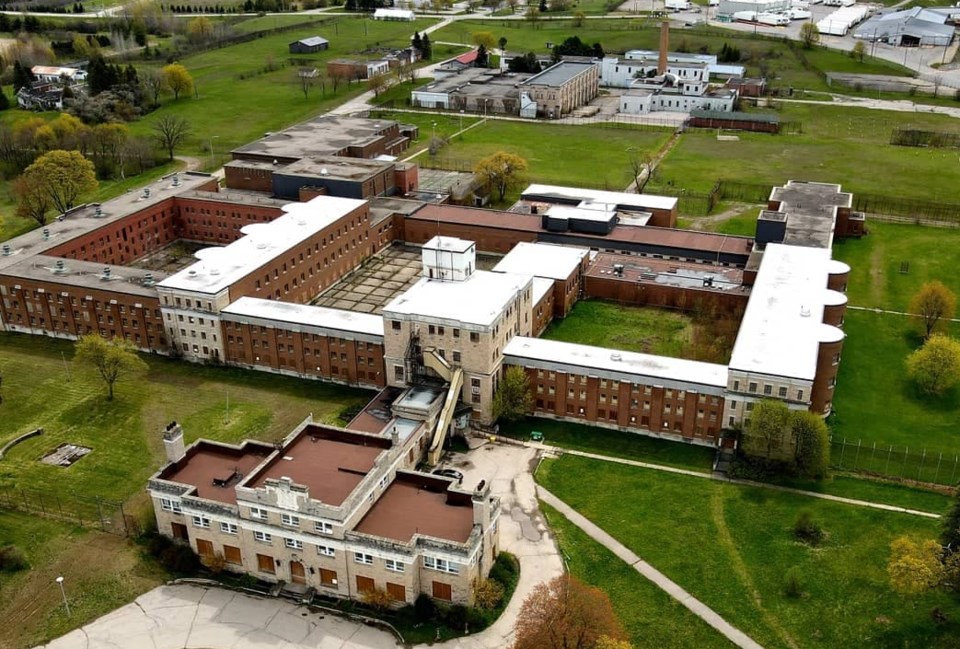Is affordable housing coming to the former Guelph reformatory lands? That’s what city council wants.
A unanimously approved motion last month calls on the province to donate its surplus land to the municipality for the creation of subsidized, co-op or non-profit housing. That request came as one of several amendments to the city’s pledge to make changes to the approval process for new housing, with the goal of supporting the creation of 18,000 new units locally by 2031.
It turns out the former reformatory lands is the only property in Guelph owned by the province that’s currently considered surplus – three others are in active use, notes a spokesperson for Infrastructure Ontario, which manages provincially owned properties on behalf of the government.
“This would be one way to unlock land for what would be truly affordable housing,” Coun. Dominique O’Rourke, who put forward the amendment, told GuelphToday. “The current legislation doesn’t create any provisions to help the people who are currently providing real affordable housing. That’s non-profit, co-op and subsidized housing.”
Both O’Rourke’s amendment and the housing pledge as a whole received unanimous council support.
The former reformatory property, officially known as 785 York Rd., is 225.6 acres in size, with an unidentified price tag on the province’s online listing of surplus properties.
Council made the housing pledge in response to the provincial government’s passing of Bill 23, the More Homes Built Faster Act. That bill, which reduces development charges and parkland fees for some construction projects, is intended to aid in the creation of 1.5 million new housing units throughout Ontario by 2031.
The bill also established the definition of affordable housing as 80 per cent of market value, rather than the city’s previous standard of 30 per cent of household income.
During city budget confirmation discussions earlier this year, city staff pegged the financial loss flowing from Bill 23 at more than $1 million annually.
“We’re saying, if you want us to meet these objectives, there’s a number of options – that would be one,” O’Rourke explained of how the province could help make new housing targets achievable. “They could donate some or all of the (Ontario Reformatory) lands, they could help us clean up brownfields, there’s a number of things.”
O’Rourke said she knew the reformatory lands is the province’s only surplus property in Guelph when she put her amendment forward, though she intentionally didn’t identify it in the amendment or during council discussions.
“It’s more the principle of it than the piece of land,” she said, noting such donations could be made to municipalities throughout Ontario.
The former reformatory lands are included in the city’s planned Guelph Innovation District (GID), which is to include a mix of employment, residential, commercial and natural heritage uses.
Last summer city council approved a motion to launch the process of protecting specific features of the former reformatory property under the Ontario Heritage Act, as well as a study that could cover the area as a whole.
Designation of the individual features has since been completed and efforts to study the larger area have begun, with council set to consider the study boundary next week.
In December of 2021, the province sold 328.6 acres of land within the GID area, consisting of the Agricultural Research Institute of Ontario's former Guelph Turfgrass Institue and former Wellington Detention Centre property, to Fusion Homes for an undisclosed amount.
Though the province owns much of the rest of original reformatory property, it no longer owns all of it. Through the years parcels have been sold off, with pieces now owned by the City of Guelph, along with Cargill Meat Solutions.
The reformatory was fully decommissioned in 2001 and the property has been vacant since 2014, when the Ministry of Community Safety and Correctional Services completely left the site. With no identified uses for it, the provincial government has declared the property to be surplus.
